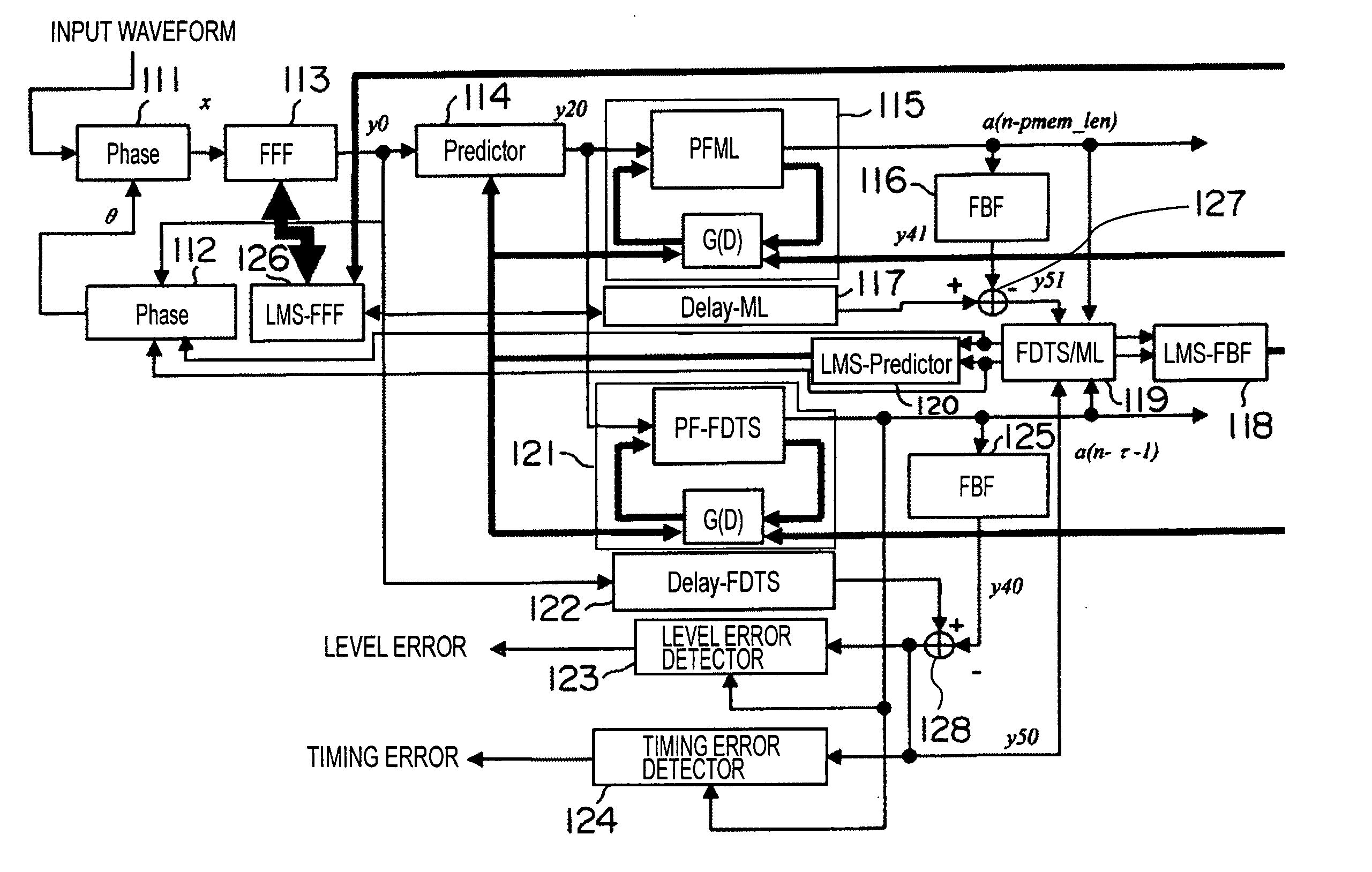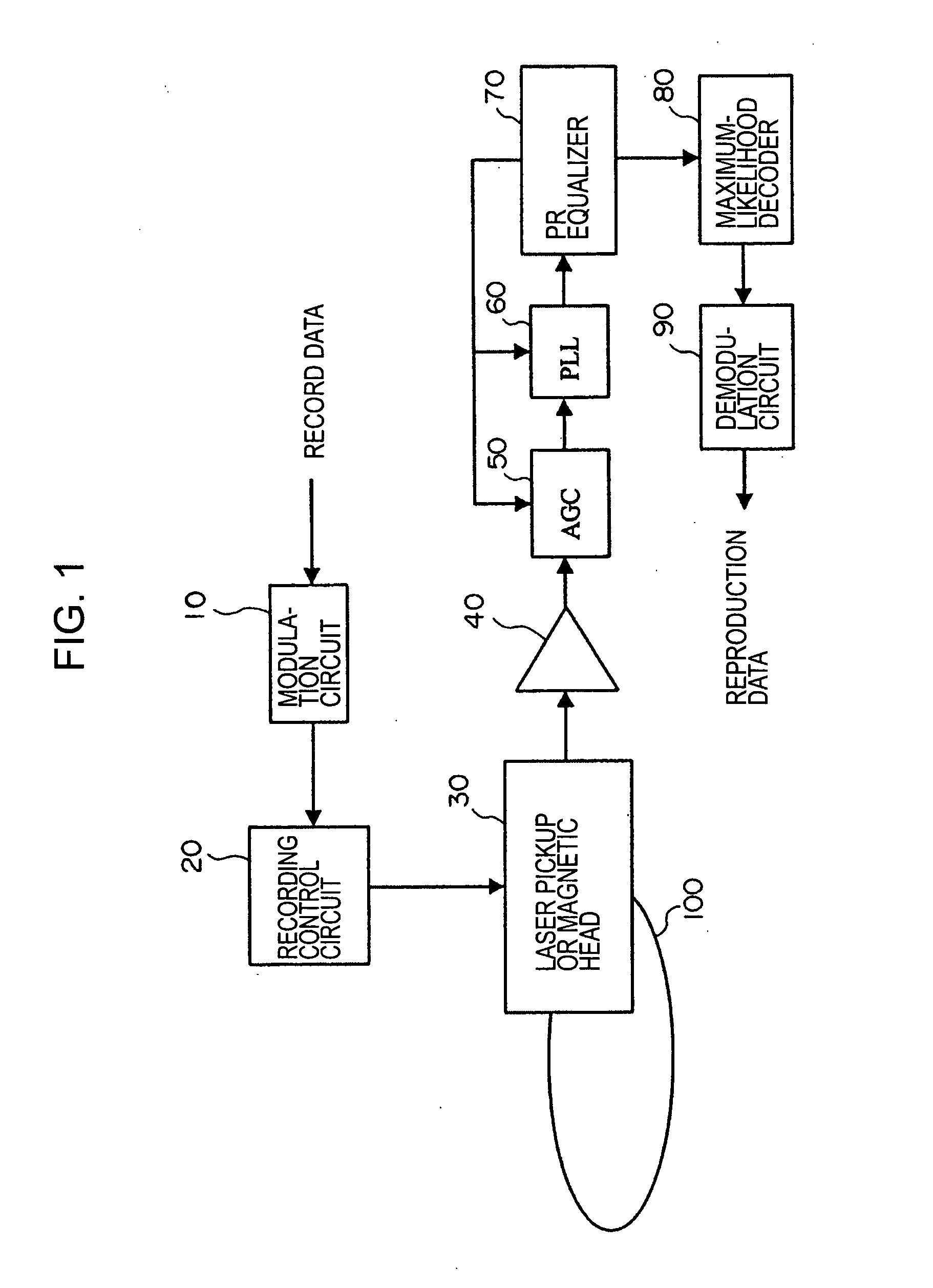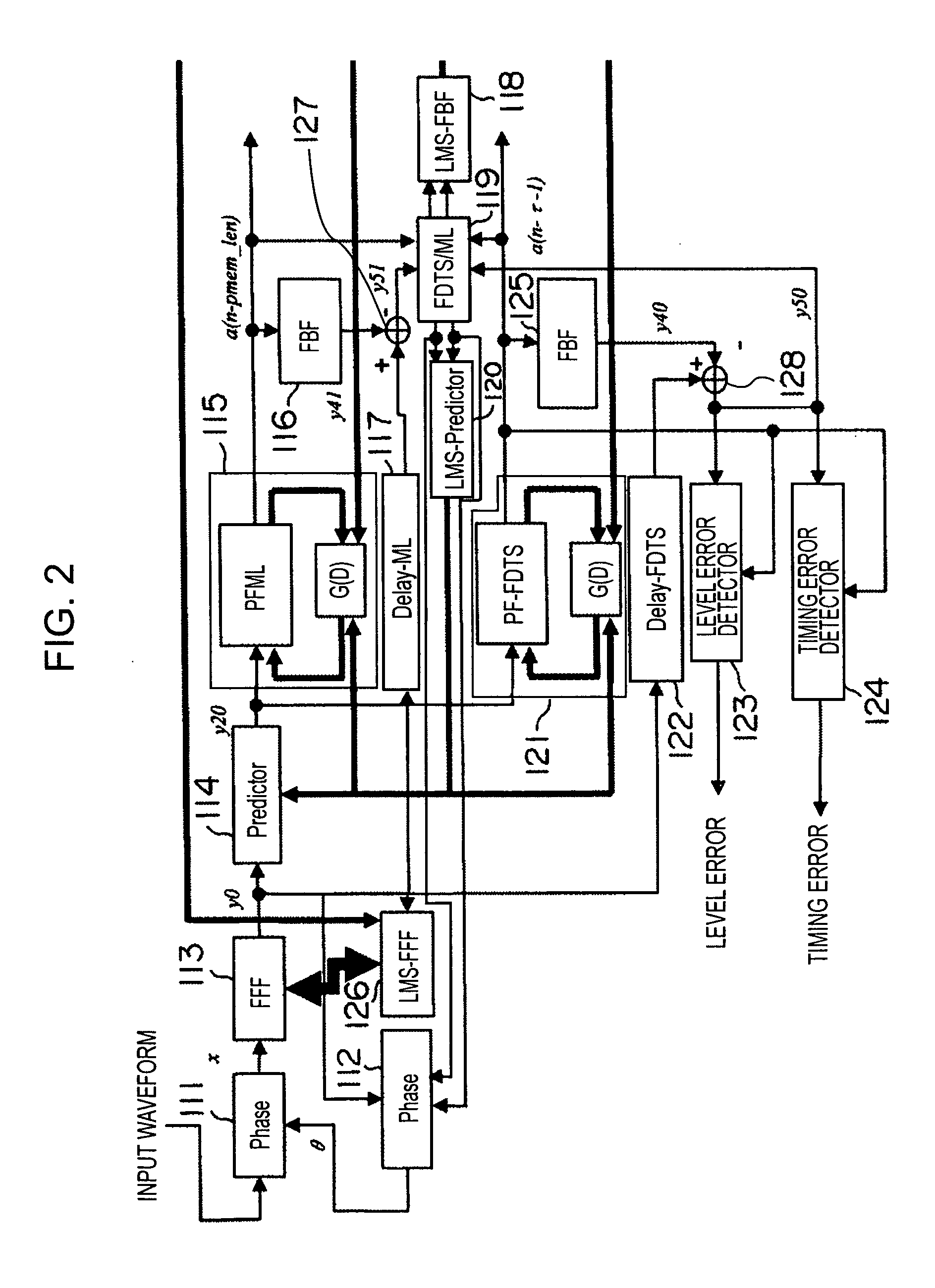Adaptive equalizer, decoding device, and error detecting device
- Summary
- Abstract
- Description
- Claims
- Application Information
AI Technical Summary
Benefits of technology
Problems solved by technology
Method used
Image
Examples
Embodiment Construction
[0047] In an adaptive equalizer of an embodiment of the present invention, for a waveform containing a partial response and distortion in only the leading-edge portion of ISI of a waveform equalized by a prior-stage feedforward filter (FFF) so as to satisfy causality, equalization that does not consider postcursor ISI subsequent to the partial response is performed; a feedback filter (FBF) uses a determination result of a decoding device to generate a response for the distortion of the partial response portion and the postcursor ISI; and the result is subtracted from an FFF output delayed by the amount of determination delay to create a desired partial response waveform.
[0048] As a method for the FFF for performing equalization that satisfies causality, an LMS algorithm is applied to the partial-response waveform generated as described above. In addition, as a method for the FBF for creating a response for the distortion of the partial response portion and the postcursor ISI, an LM...
PUM
 Login to View More
Login to View More Abstract
Description
Claims
Application Information
 Login to View More
Login to View More - R&D
- Intellectual Property
- Life Sciences
- Materials
- Tech Scout
- Unparalleled Data Quality
- Higher Quality Content
- 60% Fewer Hallucinations
Browse by: Latest US Patents, China's latest patents, Technical Efficacy Thesaurus, Application Domain, Technology Topic, Popular Technical Reports.
© 2025 PatSnap. All rights reserved.Legal|Privacy policy|Modern Slavery Act Transparency Statement|Sitemap|About US| Contact US: help@patsnap.com



